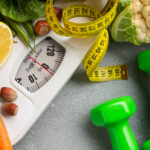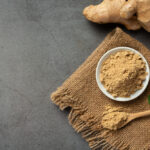Weaning can be a challenging and confusing process for mothers and fathers. Weaning refers to the transition from breast milk or formula to solid foods, which often occurs between the ages of 4-6 months.
This is a crucial time when babies start developing their taste buds and are introduced to different flavors and textures.
However, weaning isn’t just about introducing solids—it’s also about creating healthy eating habits that will last a lifetime. In this blog post, we’ll discuss the process of weaning in detail: what it means, why it is important, and how to make sure that your baby becomes a well-rounded eater who enjoys all kinds of food as they grow into adulthood.
Weaning can be a challenging yet rewarding experience for both moms and babies. With the right preparation and techniques, you can make the process smoother and easier.
This guide will provide you with simple steps, tricks, and techniques to maximize the success of weaning your baby.
What is weaning?
Weaning is the method of shifting your baby from breast milk to solid food.
It can be a difficult process for new parents, but with a bit of planning and patience, you and your baby can have a seamless transition.
The first stage is to gradually incorporate solid foods into your baby’s diet. This can be done by giving a few small amounts of food at each meal or by adding mashed or pureed fruits or vegetables to their bottle.
When your baby appears to be interested in eating solid meals, you may begin to increase the quantity and type of foods you serve.
It’s wise to note that each baby is different and will learn at their own pace. Some babies may take longer than others to adapt to solid foods.
Simply be patient and continue to introduce different foods until your kid appears to be ready to consume them.
If you’re not sure where to begin, you may read our guide or seek guidance from your pediatrician to guide you through the weaning process.
The Different Types of Weaning
Weaning a baby from breast milk to solid food is a gradual procedure. There are several approaches you may take, and the one you pick will be determined by your child’s age, growth, and preferences.
At mealtimes, one typical approach to start weaning is to feed your kid smaller portions of mashed or pureed fruits and vegetables.
You might also serve them finger foods like soft cheese or baked spaghetti. You may gradually increase the amount and type of meals you serve as they become comfortable with eating solid food.
Another approach is to maintain breastfeeding while also introducing solid meals. Partial weaning might be beneficial if your kid is resistant to giving up breast milk.
You would progressively limit the number of times you breastfeed each day while still providing lots of nutritious solid foods with partial weaning.
Whatever method you use, keep in mind that the aim is to make the transition as easy as possible for both you and your child.
Allow them to move at their own speed and be patient – it may take some time for them to adapt, but they will!
Advantages and Disadvantages of Weaning
There are several suggestions on when and how to wean your baby from breast milk to solid meals. Some parents favor a gradual approach, while others prefer a more abrupt one.
Finally, there is no right or wrong way to do it; it is a personal choice based on what is best for you and your kid.
However, there are certain advantages and disadvantages to both gradual and abrupt weaning that you should be aware of before making your choice.
Weaning gradually
Advantages of weaning gradually
- Allows you and your baby to gradually adjust and connect during the process
- Can help prevent swelling and pain associated with abruptly discontinuing breastfeeding
Disadvantages of weaning gradually
- May take longer than abrupt weaning
- Can be difficult to adhere to if you have an uncertain schedule or lifestyle
Abrupt Weaning
Advantages of abrupt weaning
- Can be completed faster than gradual weaning
- Maybe less painful for both you and your baby than progressively lowering breast milk consumption
Disadvantages of abrupt weaning
- May cause swollen breasts and discomfort as your body adjusts to making less milk.
Finally, the choice to wean your baby from breast milk should be made with the best interests of both you and your baby in mind.
Before making a choice, evaluate all of the advantages and disadvantages, and consult with your doctor if you have any more questions or concerns.
Age for weaning
According to AAPD (American Academy of Pediatrics Dentistry), baby should be on breast feeding only up to age of six. After that it is must to get your baby feed on adult diet. AAPD and WHO recommends not to give baby adult diet till age of six.
AAPD recommends, the baby should drink from a cup after baby’s first birthday and then be weaned from the bottle at 12 to 14 months of age.
After age of six, AAPD recommends to add solid foods along with breast milk till one year of age. Between six to twelve months it is recommended to add iron-enriched solid foods. W.H.O. (World Health Organization) recommends breast-feeding till age of two of child’s life.
AAPD suggests to avoid ad libitum nocturnal breast-feeding (feeding babies according to their hunger) after the first primary tooth begins to erupt.
Weaning procedure
Weaning is a step by step procedure. It should be in gradual manner. It is not a one-day work.
First, Mother need to skip one-day of breast feeding weekly and allow your baby to feed on bottle or cup.
Once they start eating solid meal thrice a day, automatically babies will stop breast feeding or bottle feeding.
If your baby stops breast feeding, please give him/her milk supply from other source to provide nutrition. It is better get your baby busy with playing games, give him or her a bottle or cup to feed, change the daily routine.
According to American Academy of Pediatrics, after one year of age, you should start substituting a cup for your baby’s midday bottle.
You can also put small amounts of liquid in a regular cup. It may take few weeks for your baby to use cup properly so be patient for that period.
Then gradually start taking away the morning and evening bottles and give your baby a cup. And at last do the same for the bed time bottle.
But be aware, keep bed time bottle weaning for the last as it is most difficult for you baby to wean from bottle to cup at bed time.
Once your baby acquires this habit then your baby should no longer require anything to eat or drink during night.
You can also take advice from Pediatrician about weaning.
What Foods to Eat during Weaning?
When weaning your baby from breast milk to solid foods, there are a few things to keep in mind.
To begin, it is necessary to introduce new meals gradually and one at a time. This will help with the identification of any potential allergies or sensitivities.
Second, provide a range of nutrient-rich foods so that your kid gets the calories and vitamins he or she requires to flourish.
Finally, avoid processed foods and sugary snacks, which can lead to weight gain and health concerns in the long run.
The following foods are excellent for babies throughout the weaning process:
- Make a puree of fresh fruits and vegetables
- Add Oatmeal and other whole-grain cereals
- If you are Non-vegetarian, you can add some lean proteins to your baby foods such as chicken or fish
- You can add yogurt or cottage cheese to your baby’s healthy meal
- You can give your baby freshly made soups from healthy vegetables
By following these instructions, you may ensure that your baby’s transition to solid meals is both healthy and pleasurable.
Start with Gradual Adjustments
Start by gradually adjusting your baby’s meal times and foods.
Make small gradual changes, whether that’s decreasing the time between meals or slowly introducing new foods.
Offer your baby solids in addition to breast milk to slowly adjust them to mealtimes and different flavors.
Familiarize them with different tastes and textures so they have a better idea of what they like when it comes time for full weaning.
Keep the Introductions Fun
Introducing solids should always be fun for your baby. Making mealtime an enjoyable experience, cracking a joke, or singing a song can help keep the mood light and make it easier to transition into.
You can also involve your baby in their own weaning journey with self-feeding activities. This will not only introduce them to different foods and consistencies but also give them a sense of independence and control during mealtimes.
Keep It Quick and Varied
Keep weaning sessions short, offering a variety of foods at each meal.
Don’t focus on quantity, instead encourage your baby to try out multiple flavors and textures during each session.
You can also make it easier by using finger food like steamed vegetables as they require no cutting or preparation and are easy to pick up with little hands.
Offering finger food also helps increase your toddler’s independence in mealtimes and is a great way to start developing good eating habits.
Don’t Turn Feedings into a Power Struggle
When it comes to weaning your baby, it’s important that you don’t turn the process into a power struggle.
Giving loads of choices and allowing them to explore different foods will give them the confidence to try new things without feeling intimidated or pressured.
This also allows your child to develop their own food preferences rather than just eating what’s put in front of them.
Avoid getting upset or scolding if they refuse something. If you stay calm and positive, they are more likely to stay engaged and willing to explore different tastes and textures.
Reboot Routines Whenever Necessary
There may be times when your weaning plan or routines need to be adjusted and rebooted.
For instance, if you’re introducing solids, don’t be afraid to go back a step if necessary and start with more simple purees before progressing onto lumpier textures.
If your child isn’t getting enough calories, offer an extra snack instead of trying to increase the amount at mealtimes.
Or, if they seem uncomfortable in their highchair – try other seating options like a dining room chair with cushions or pillows for support.
Effect of prolonged bottle use
Prolonged use of bottle for feeding can cause tooth decay and may boost your baby to drink much more milk than your baby need. So it is best recommended to wean after your baby’s first birthday.
It has been seen that breast-feeding for over 1 year and at night after eruption of teeth may be associated with Baby bottle tooth decay (Early Childhood Caries) (ECC).
Weaning decided by mother
Breastfeeding depends on Mother and his/her baby.
A mom can feed (breastfeeding) baby as long as she wants and a baby wants.
Some mothers decide to wean after her baby’s first birthday, while some mom decides to wean after 1 or 2 year. This is known as “extended breastfeeding”.
Weaning themselves by your babies
Many babies decide to wean themselves. In that case, baby shows disinterest in breastfeeding.
Baby show less time towards breastfeeding compared to previous breastfeeding (before weaning). Baby starts biting or pulling the breast instead of taking milk.
This kind of act of your baby shows that he or she is now disinterested in feeding through the breast. So, at that time you can think of switching your baby to solid foods.
Conclusion
Weaning is a process that can be daunting for both parents and baby alike, however, it’s an important stage in the growth of your child and their transition to adulthood.
With proper planning, patience, and support from family members, caregivers, and healthcare providers weaning can be made easier.
Remember to take into account your babe’s individual needs when deciding how you want to go about weaning; some babies will take longer than others while some may need more help than others along the way.
There is no one-size-fits-all approach when it comes to this huge milestone – all you need is love!













